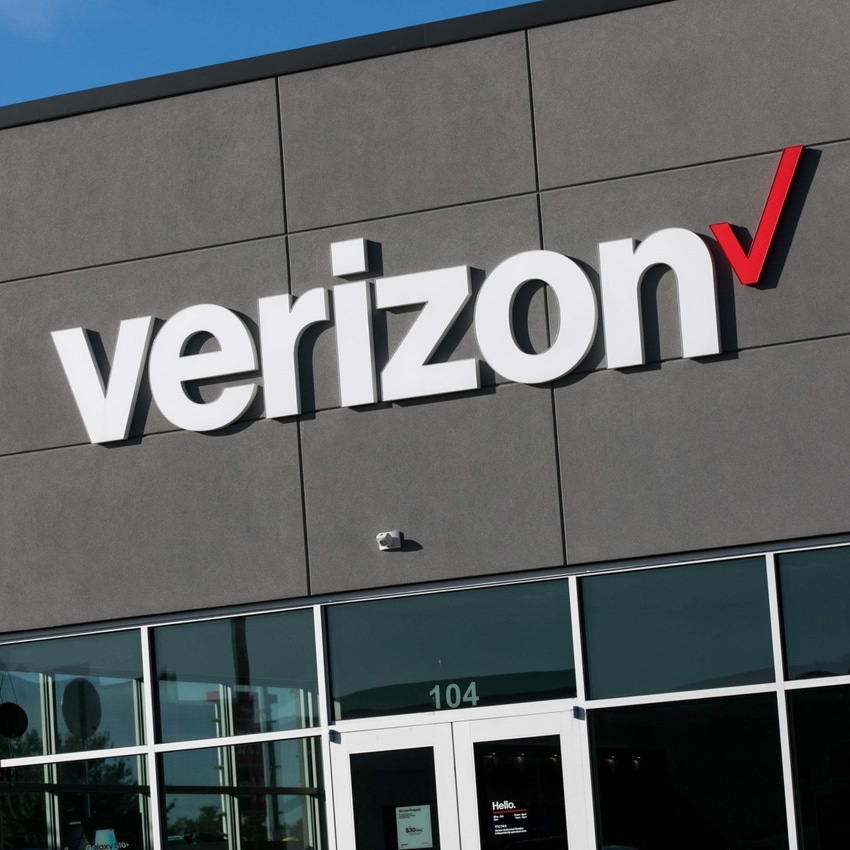
In its wireless business, Verizon reported significant declines in the number of its consumer postpaid phone customers and prepaid customers, alongside a slowdown in the growth of its business postpaid phone customers. But company officials offered an upbeat tone, and reiterated Verizon's intention to grow its wireless service revenues.
"We're making steady progress and expect to maintain the momentum going forward," said Verizon CEO Hans Vestberg during his company's quarterly earnings calls with investors Tuesday.
Broadly, Verizon's first quarter results offered few surprises. As a result, the company's shares stayed relatively stable Tuesday, though Verizon's stock is down around 26% over the past 12 months.
Figure 1:  Verizon's shares have been falling over the past year.
Verizon's shares have been falling over the past year.
(Source: Google Finance)
"Verizon faces a challenging operating environment, with wireless market share that will be difficult to maintain in an increasingly competitive market. Management pins its growth aspirations to its superior network; however, their network advantage is waning," summarized the financial analysts at New Street Research in a note to investors following the release of Verizon's earnings. "While the outlook isn't great, 2023 expectations and the stock price largely appear to reflect this."
Finding the goal
In its wireless business, Verizon reported a total of 2.4 million retail postpaid phone gross customer additions, a figure up 5.3% year over year. But the company lost 263,000 retail postpaid phone customers among consumers, almost as many as it lost in the same quarter a year ago.
Moreover, Verizon's retail postpaid phone net customer additions among business users continued to shrink, while its prepaid customer losses accelerated. Verizon blamed its prepaid declines on troubles in the SafeLink brand it acquired through its purchase of TracFone; Verizon recently refreshed its SafeLink pricing.
Overall, Verizon's customer figures were largely in line with analyst expectations – and they track with the operator's losses throughout 2022.
However, Vestberg said Verizon's primary goal involves growing its wireless service revenues, not necessarily its customer figures.
"We are now going to continue to improve our net additions on consumer, but most importantly is to grow service revenue," Vestberg said, explaining that the operator will focus on improving its earnings and margin through a variety of strategies including seeking new customers, encouraging existing customers to spend more with the operator, and through cost-savings efforts.
Along those lines, company officials said Verizon continues to make progress on its goal to reduce annual costs by $2-3 billion by 2025.
In the first quarter of this year, Verizon reported total wireless service revenue of $18.9 billion, up 3% year over year.
Looking forward
Verizon officials said the company's broad strategy in wireless remains unchanged: To offer a speedy, reliable wireless network alongside attractive pricing plans.
Vestberg again noted that Verizon's network ought to benefit significantly from the remaining C-band spectrum that will become available later this year. He said the company's current midband 5G network runs on around 60MHz of such spectrum, but that figure would expand to 160MHz by the end of this year. With more spectrum, 5G operators can provide faster services to more customers.
"We have a clear proposition when we roll out the C-band," he said, explaining that the company has enjoyed better financial and customer metrics in markets where it offers faster 5G services on midband spectrum like the C-band.
"We have the best network, clearly, and it's just going to get better," Vestberg said.
Further, Vestberg said that Verizon would work to offer more segmented service plans, with an eye toward more "targeted" and "surgical" pricing offerings.
"Stay tuned for some of the new things coming," he hinted.
However, Vestberg acknowledged that "it's going to be a little bit smaller switcher pool" in the future. He was responding to a question about an expected decline in the number of new customers in the US wireless industry in general. But Vestberg said that, even if the pool of new customers shrinks, he expects Verizon to acquire "our fair share."
"We have good momentum with all the offerings we have," he said.
Related posts:
— Mike Dano, Editorial Director, 5G & Mobile Strategies, Light Reading | @mikeddano
About the Author(s)
You May Also Like











